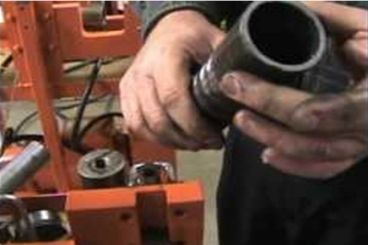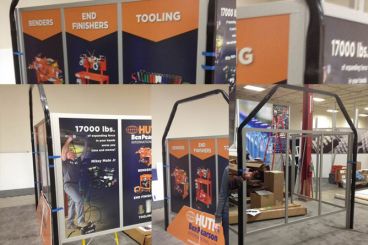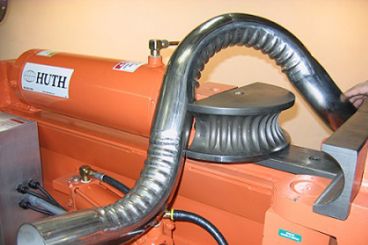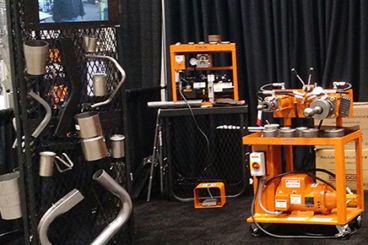The Easy-To-Use Pipe Bender … A compression pipe bender is an extremely powerful and versatile tool, but many who have not used one don't fully appreciate how easy it is to use. When we get people to do their first bend, intimidation tends to fade away and enthusiasm to do more takes over!
How to Use a Compression Pipe Bender
There are two ends to the machine … the bending end, and the end-forming end. We'll focus on the bending end to show just how simple this tool is. There are 3 things you need to know in advance … 1) The distance between bends, 2) The orientation of the desired bend, and 3) The depth of the desired bend.
- Plot your distances with a marker: Mark your pipe where you want your bends, working from left to right.
- Now turn the bender on … you are almost ready to go: Apply lubrication and set your pipe in the jaws.
- Setting a rotation dial to keep oriented: Prior to your 1st bend, setting a rotation dial on the far right end of your pipe, set to zero, will keep you oriented as you progress through multiple bends on each pipe. This is especially important if you are using bending program cards.
- Choose bend radius: Small radii give tighter bends, larger radii are more forgiving. Normally smaller tubes utilize smaller radii (larger tubes use larger radii) with a minimum 1.5-2X the tube OD.
- Bend to the right depth: Every bender has a depth of bend indicator, and automatic benders let you pre-set the depth of bend. The pionter tells you when you reach your target bend angle.
Basically, that's it. There are times when a bit more knowledge helps (When do I use a 1/2 shoe? What do I use for thin-walled material?). But these are compression bender basics for bending with your machine!
Bending exhaust pipes without cards? Watch this!
Shop Talk: Did you know?
Huth Ben Pearson International works with some of the leading car racing experts on custom seamless collecors and custom tooling. Give us a call on how we can put our knowledge to work for you.





